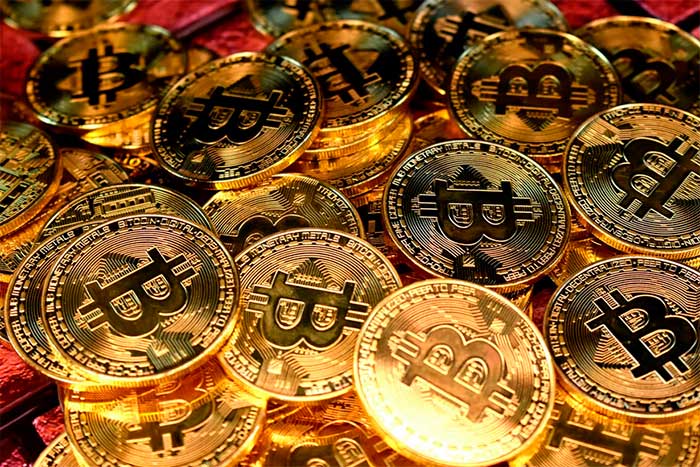
The internet is a confusing place. Even for millennials, who grew up using old desktop computers, there’s a lot that can be hard to understand.
One of the most confusing topics when it comes to using the internet is image file formats. The world wide web relies on the use of images to visually display content and to make websites and applications much more appealing.
But there are different types of file formats suitable for different occasions. If you’re interested in photography, graphic design, web design, or marketing in general, then you’re going to need to have a clear understanding of image files.
Keep reading below to learn more about the different types of computer files you’ll come across as you create and share content.
JPG Files
JPG is the same as JPEG. They are the same image file, but you’ll likely see files in either format as you browse the web. It stands for Joint Photographic Experts Group.
This was the name of the group that came up with the JPG image standards back in 1992.
The JPG format is primarily used for photographs. When you have tons and tons of details in an image, JPG files work best to compress the image file sizes without losing too much quality.
These images use a lossy compression method that removes certain colors from the image that aren’t visible to the human eye anyway. The result is a more efficient file size that can move across the internet with ease, without a visible loss of quality.
The more you compress the image, however, the more the quality will deteriorate. Eventually, the image will start to look pixelated and blurry.
For photographers, JPG is the most important image file, as your camera will likely produce JPGs automatically. They are widely accepted on websites and apps that allow you to upload images.
PNG Files
So what is PNG file? PNG is the other common image file you are going to see as you navigate the web. Every website will use PNG image files for very specific reasons.
PNG stands for Portable Network Graphics. It was created after the GIF file, mentioned below. Back then, GIF was copyrighted and you couldn’t use the file format without permission, unlike today, where all are open to anyone and everyone.
PNG files are superior to GIFs in that they allow for greater compression and more colors. But one of the biggest uses for PNGs is the ability to feature transparent backgrounds.
With JPB images, you can’t have any transparency. JPG images are solid all the way through. But with PNG files, you can remove sections of the image, creating some degree of transparency.
This makes it ideal for logos and other digital graphics that are used on marketing materials, packaging design, and creating merchandise.
PNG files are used extensively by graphic designers and web designers to create images that can be used in a variety of different ways. If dealing with websites or app development, you’ll work a lot with PNG files.
PDF Files
PDF files aren’t made specifically for images. They are used more for text-based documents. For example, if you download a digital bank statement, or save an essay that you typed up, you’ll be getting a PDF file.
However, you can save images in PDF file formats. And there are a few reasons you might want to do that.
For one, it’s a universal format. So it will look the same across every device you open it on. That’s what makes it so printer-friendly.
PDF files don’t use the same lossy-compression that JPG files use. Rather, they maintain image quality at all times. So even as you use alternative compression methods, you aren’t going to ruin your image.
But even though your images will look great, PDF files aren’t easily integrated onto websites, media sharing platforms, or applications. They can be used to create editable files and printer-ready files.
But PDF files can be much larger than JPGs making it harder to share them across the web.
GIF Files
The internet is divided into two main camps; those who pronounce GIF as “jiff” and those who pronounce it as “ghiff.”
Regardless of how sophisticated or silly you are with your pronunciation, you need to know what these files are and when they’re used.
GIFs are actually a collection of images that form a short, repeating video. Countless memes and mini-videos on social media are GIF files.
You can make a GIF file out of an existing video. Or you can combine multiple computer images together to essentially create a stop-motion video file.
GIFs are also videos that can play automatically since they are more like an image than a video. If you share a GIF on Twitter, for example, it will play for everyone as they scroll past it.
If you share an actual video on Twitter, they’ll need to click play in order to watch it.
When should you use GIFs? When a short-form video is required, you can use a GIF. When making a meme or adding a sense of humor to an email or social media post, GIFs can be a great option.
SVG Files
SVG files are less common, at least to the casual internet user. They are vector files that are used primarily by graphic designers.
Vector files are unique in that they can scale both up and down without losing any image quality. Their quality is static.
So an SVG can look good on a mobile phone as well as printed on a huge poster or billboard.
SVG files are harder to work with unless you have image editing software or graphic design software that supports SVG files.
Understanding Image File Formats
Now you know all about the different image file formats. Or, at least, the ones you need to know about. There are others, but unless you have a specific occupation, you won’t need to know about them.
Are you looking for other information on things that affect your web browsing experience or computer performance? Then head over to our blog to find other helpful articles today.


